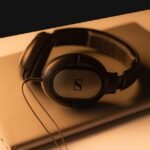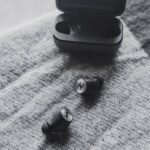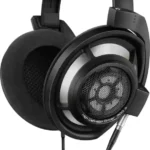Sennheiser E835 Original VS Fake, The Sennheiser E835 is one of the most popular dynamic cardioid microphones in the world, favored by musicians, vocalists, and public speakers alike. Known for its durability, sound quality, and affordability, it’s no surprise that it’s a common target for counterfeiters. In this article, we’ll explore the differences between the original and fake Sennheiser E835 microphones, highlighting key factors to help you make an informed decision when purchasing one.
1. Packaging and Documentation
One of the first places to spot a fake Sennheiser E835 is the packaging. The original microphone comes in a high-quality box with crisp printing, clear logos, and proper labeling. Inside the box, you’ll find well-organized accessories like a user manual, a pouch, and possibly a mic clip, all neatly packaged.
In contrast, counterfeit versions often have poorly printed boxes with faded logos and mismatched fonts. The accessories may also be missing or poorly made, and the user manual might have spelling errors or lack the clear, professional design found in the original.
2. Build Quality and Design
Sennheiser is known for its robust and well-engineered products, and the E835 is no exception. The original microphone has a solid, metallic body with a matte black finish. It feels heavy and durable in your hands, with a smooth grille design that protects the capsule.
Fake E835 microphones often use cheaper materials, resulting in a lighter and more fragile feel. The paint or finish may show signs of chipping or wear, and the microphone’s grille can appear rough or uneven. The counterfeit models may also feel plasticky, and the overall build quality will not match the original’s premium construction.
3. Sound Quality
The Sennheiser E835 is known for its clear and natural sound, with a slight emphasis on the midrange that makes vocals stand out. It is specifically designed for stage and studio use, providing a consistent and transparent audio experience.
Counterfeit E835 microphones often lack this sound clarity. The frequency response may be uneven, with poor bass or treble reproduction, and the overall sound can be muffled or distorted. In some cases, fake microphones can produce electrical interference or noise, especially when used with a sound system or mixer.
4. Weight and Handling
The original Sennheiser E835 has a good weight to it, with the microphone’s metal body contributing to its sturdiness and balanced feel in hand. It is easy to hold during performances or recordings and feels comfortable over extended periods of use.
Fake versions, on the other hand, tend to be lighter and may feel unbalanced in the hand. They might also have a slightly different shape, making them uncomfortable to use for long sessions. The handling noise can be higher with fakes, and the internal components might not be as securely fitted.
5. Price
While price alone is not always a definitive factor, it can be a strong indicator of authenticity. The Sennheiser E835 is priced in a mid-range bracket, typically costing between $100 and $150 depending on the retailer. If you find an E835 being sold for a significantly lower price, it’s a red flag that the microphone may be counterfeit.
Counterfeit microphones are often sold at much lower prices, making them an attractive option for budget-conscious buyers. However, the savings come at the cost of performance, durability, and reliability, making the decision to buy a fake microphone a risky one.
6. Serial Numbers and Authentication
Every original Sennheiser microphone comes with a unique serial number that can be used to authenticate the product. When purchasing an E835, it’s essential to verify the serial number with Sennheiser’s official website or authorized retailers. Fake models typically lack a proper serial number or have one that is duplicated across several microphones.
If you’re uncertain about the authenticity of your Sennheiser E835, you can always contact Sennheiser customer support and ask them to verify the product based on its serial number.
7. Warranty and Support
Sennheiser offers a warranty on all its genuine products, providing peace of mind to buyers. This warranty covers defects in materials and workmanship, and customers can get assistance from Sennheiser’s dedicated support team in case of any issues.
Fake microphones, on the other hand, come with no such warranty or after-sales support. If you encounter any issues with a counterfeit E835, you’ll have to deal with the inconvenience of contacting the seller, which may not always be a reliable option.
8. How to Avoid Buying Fake Sennheiser E835 Microphones
To ensure that you purchase an authentic Sennheiser E835, follow these tips:
- Buy from authorized retailers: Purchase the microphone from a reputable source, such as the official Sennheiser website or well-known audio equipment stores.
- Check the price: If the price seems too good to be true, it probably is. Be cautious of deals that seem too cheap for the quality of the product.
- Verify the serial number: Always check the serial number with Sennheiser or their authorized dealers to confirm authenticity.
- Inspect the packaging: Pay close attention to the quality of the packaging, documentation, and accessories.
- Test the sound: If possible, test the microphone before purchase. Genuine Sennheiser microphones will always offer superior sound clarity and consistency.
Conclusion
The Sennheiser E835 is a high-quality microphone that offers excellent value for its price. However, with the rise of counterfeit products in the market, it’s important to be vigilant when making a purchase. By keeping an eye on key indicators like packaging, build quality, sound, and price, you can confidently distinguish between an original and a fake Sennheiser E835. Always opt for a trusted retailer to ensure that you get the genuine product with the best possible performance and support.
You Might Also Like These:
how to put a logitech keyboard in pairing mode












No Comment! Be the first one.